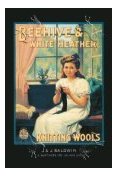


MAGIC TURBAN HAT as edited by Elizabeth F. Stabler
This is a variation of the famous Plymouth turban hat pattern.

 Hudas’ hat
Hudas’ hat
Hat for Shawn Lockyear’s birthday.
Materials: Noro’s Kureyon (aran weight), Noro’s Silk Garden (listed as aran but knits as worsted in my experience) or Silk Garden Lite (dk). Lately I’ve been using the Silk Garden Lite with great success. Adjust number of repeats if necessary (see below). Any other yarn with long, long color repeats will do.
Equipment: Needles - #5 for Aran or worsted, #4 for dk; a couple of yards of thick cotton yarn for the provisional cast on; darning needle.
Pattern stitch: repeat of 8 rows: For 4 rows K1 one row/ P1 row then reverse for the 8-row rib.
The effect is achieved by decreasing at the beginning of the row and at the end of the same row – EVERY OTHER ROW for the entire work. Place a marker of some sort to remind you which row will be the dec / inc row. For a neater effect do the inc & dec one stitch from last stitch. The result is a rounded, slightly tighter edge at the increase end. I like to use that end for the top of the hat and the looser edge for rolling up.
Directions: Cast on 70 (Aran or worsted) or 77 (dk) using provisional cast on. [if you have enough yarn and would like to enlarge the rolled section, cast on 75-80 sts for #5 needles on worsted or Aran and 85-90 sts on #4 on dk]
P first row .
On next (K) row, begin the dec (SSK) / inc increasing (make one stitch by pulling up the yarn between the third to last and second to last stitch). Only work two rows before switching to the other ribbing stitch (stockingette or reverse purl). At the end of the work you will complete this 4-stitch section, allowing one row for the grafting. Don’t worry if this seems mysterious – it all becomes a “duh” when you get to the end.
Measure it around your head as you get to 13 or so repeats! Make up to 15 repeats of 8-row ribbing pattern, depending on size of head. When you are finished you will have a parallelogram and how it becomes a hat may seem mysterious. The solution is now to make a tube. Put the stitches from provisional cast on edge a needle, removing the cotton thread holding those live stitches as you put them on the needle. Hold the other needle parallel and using the kitchener stitch (which gives the hat a tidy seamlessness) graft the two edges. Hint: it doesn’t really matter but it’s easier if you start with the decrease edge first but it doesn’t always work out. This way you can use the tail to pull the stitches together at the increase (more rounded) edge to make the top of the hat.
Hint #2: Do count the stitches every now and again to make sure you have been increasing and decreasing consistently. You need to have the very same number at the end as you did at the beginning. I write from bitter experience!
